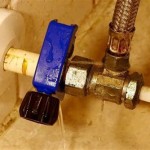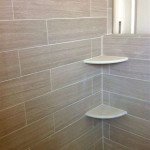Essential Aspects of Bathroom Sink Waste Pipe Size
The size of the waste pipe for a bathroom sink is a crucial aspect that directly impacts the functionality and efficiency of the drainage system. Several essential factors must be considered to ensure proper water flow and prevent clogs or backups. This article will delve into the key aspects of bathroom sink waste pipe size, exploring its importance and providing a comprehensive guide for selecting the right size for your bathroom sink.
Factors to Consider
When selecting a waste pipe for your bathroom sink, several factors need to be taken into account:
- Sink Size: The size of the sink determines the amount of water that will need to be drained. A larger sink requires a larger waste pipe to handle the increased water flow.
- Number of Drains: If your sink has multiple drains, such as for a double vanity, the waste pipe size will need to be large enough to accommodate the combined drainage capacity.
- Faucet Flow Rate: The flow rate of your faucet affects the amount of water that will need to be drained. A high-flow faucet requires a larger waste pipe to prevent overflow.
- Building Codes: Local building codes may specify minimum waste pipe sizes for bathrooms. It is important to adhere to these regulations to ensure compliance and avoid potential issues with inspections.
Standard Sizes and Types
Bathroom sink waste pipes are typically available in various sizes, with the most common being 1-1/4 inches and 1-1/2 inches in diameter. The type of waste pipe used also affects the size, with PVC (polyvinyl chloride) and PEX (cross-linked polyethylene) being the most common materials. PVC pipes are available in Sch 40 and Sch 80 schedules, with Sch 40 being more commonly used for residential applications.
Importance of Correct Sizing
Choosing the correct size waste pipe is essential for several reasons. An oversized waste pipe can lead to water retention and slow drainage, while an undersized pipe may cause frequent clogs and backups. Water retention can create a breeding ground for bacteria and mold, which can affect the air quality and health of the occupants. Clogs can disrupt water flow and result in standing water, which can cause damage and inconvenience.
Conclusion
Understanding the essential aspects of bathroom sink waste pipe size is crucial for selecting the right pipe to ensure proper drainage and prevent problems. By considering factors such as sink size, number of drains, faucet flow rate, building codes, and standard sizes, you can make an informed decision that will enhance the functionality and longevity of your bathroom sink.

Bathroom Sink P Traps Sanliv Sanitary Wares

Gordee Bathroom Basin Sink Bottle P Trap Brass U Shape 1 4 Inch Slip Inlet Drain Lavatory Adjustable Height Waste Kit Pls Measure Ur Hole Size Before Order Matte Black

Curovit Pvc Flexible Waste Pipe 1 4 For Kitchen Bathroom Sink Water Drain Hose 32 Mm Plumbing In Buy

This Image To Show The Full Size Version Sink Plumbing Kitchen Diy

What Size Pipe For Sink Drain Choosing Tips

Bathrooms Modern Chrome Bathroom Basin Sink P Trap Drain Waste Plate

Snappytrap Universal Drain Kit For Bathroom Sinks Dk 105 The Home Depot

How To Vent A Toilet Sink And Shower Drain

Connecting Soil And Waste Pipes To Below Ground Drainage
How To Install Bathroom Sink Drain Queen Bee Of Honey Dos
Related Posts







